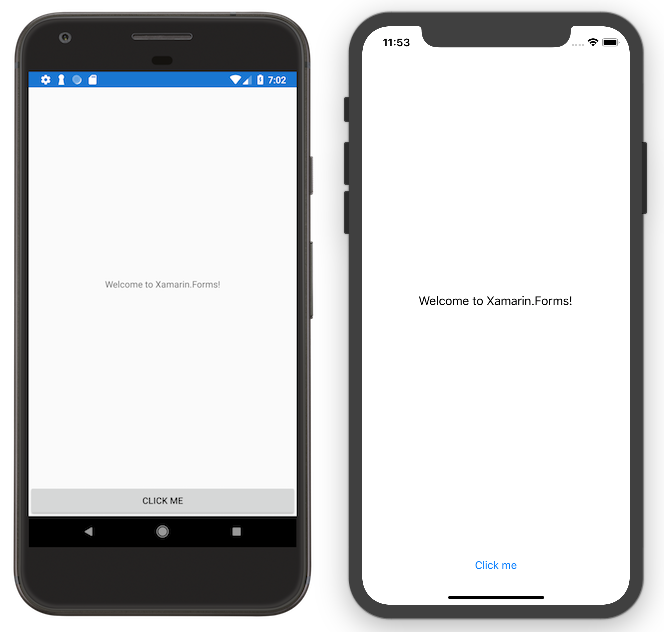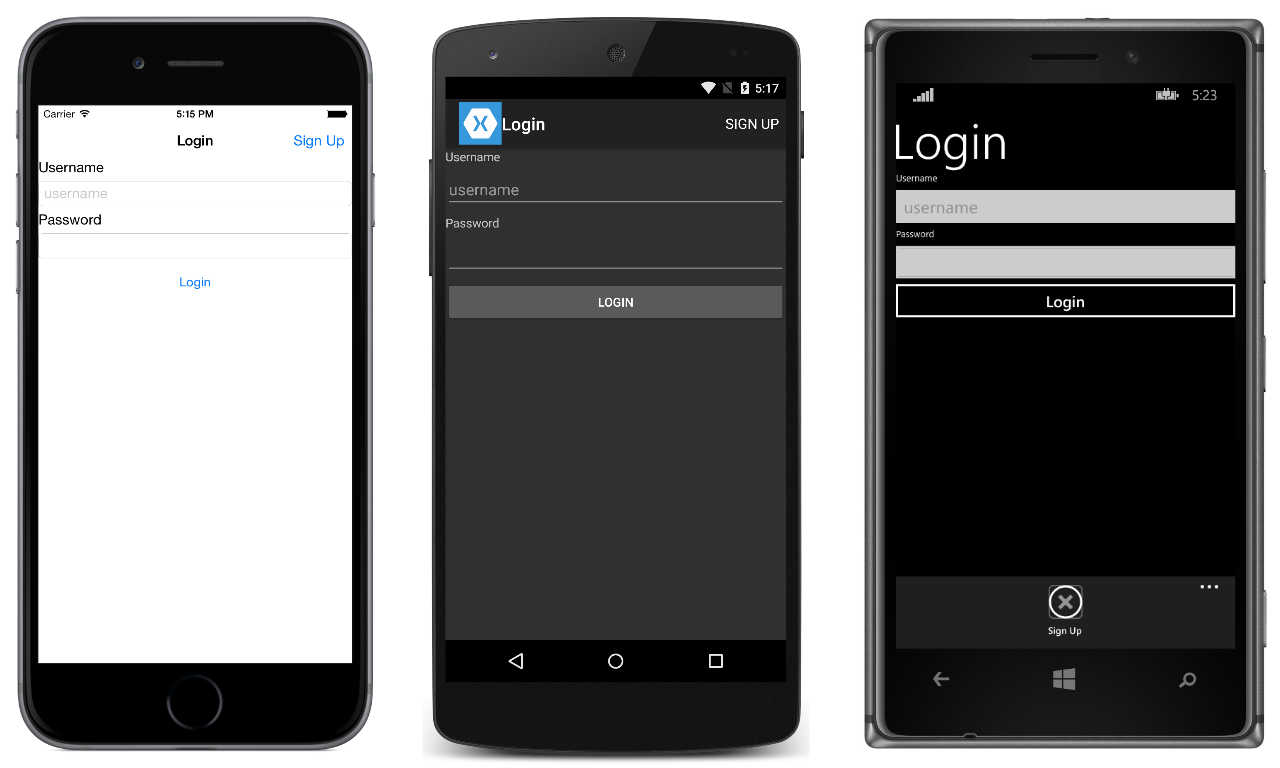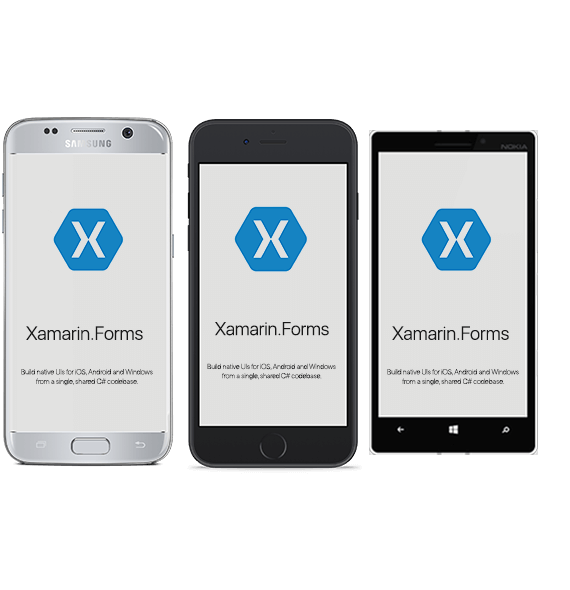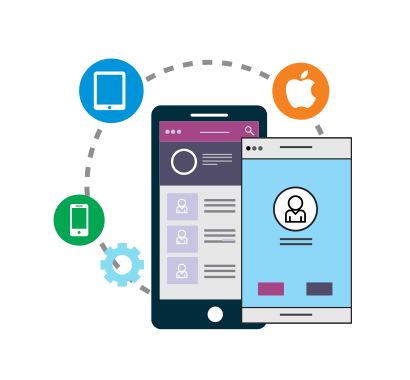Xamarin.Forms App Development

Xamarin.Forms App Development
Microsoft Connect declared our arrangements for Xamarin.Forms 4.0 and shared an open see. We should now investigate the enormous changes, beginning with Xamarin.Forms Shell, and after that touch a portion of different features.Through incalculable meetings, discussions, and overviews, we have heard your voice boisterous and clear. You need Xamarin.Forms to be simpler to use "out of the case", the route to be ever present and simpler to control, to have an increasingly steady structure crosswise over iOS and Android, and to have a quicker, progressively adaptable rundown control. Prepare to review Xamarin.Forms 4.0, which conveys on every one of those top criticism topics thus considerably more with Shell, Visual, and CollectionView.
Presenting Shell
We need to make it simpler, to begin with, Xamarin.Forms by giving a guided structure to set up your application. Shell gives you 3 levels of components to depict your application (see underneath), and after that escapes your approach to begin populating the application with substance and highlights. You could consider Shell the advancement of MasterDetailPage, NavigationPage, and TabbedPage. Your program does not bolster the video tag.
With Shell you get:
Presently you'll have to empower Shell by including a component banner just before you introduce Xamarin.Forms in your MainActivity.cs and AppDelegate .cs.
- A disentangled approach to express the abnormal state of your application design in a solitary document (AppShell.xaml)
- A chain of importance of regular UI route designs that suite your objective versatile stages: flyout menu, bottoms tabs, top tabs
- A vigorous route administration that gives URI-based steering so you can bounce legitimately to any piece of your application easily
- An extensible format based foundation to effortlessly redo components of your UI
- All that you have in Xamarin.Forms today and more to come on the Shell spec guide
Presently you'll have to empower Shell by including a component banner just before you introduce Xamarin.Forms in your MainActivity.cs and AppDelegate .cs.


Visual: Creating Consistent Design Across Platforms
It's conceivable today to make excellent local applications for both Android and iOS utilizing Xamarin.Forms. You can even get them to appear to be identical with styles, impacts, custom renderers, and a liberal apportioning of time. Visual expects to make this a whole lot simpler by giving a steady control subject of course. Right now, Visual backings the Material Design styling distributed by Google. Xamarin.Forms 4.0-pre1 today incorporates the base usage for Button, Entry, Frame, and ProgressBar. You'll see in the screen underneath that Android and iOS do look very comparable, and the sum total of what that has been done is to set Visual="Material" on the ContentPage. With that, Xamarin.Forms will pick substitute renderers that go a lot further than styles to accomplish consistency of both plan and experience.
More controls and more work to bind together format and configuration are yet to preceded Visual is truly prepared for generation use. This is only a first impression, so please go along with us on this adventure. Right now we are centered only around Google's Material Design, yet we are taking a gander at other structure dialects to help later on including Fluent, Fabric, and Cupertino.
CollectionView: Fast and Flexible Lists
You have disclosed to us you need to utilize current local rundown controls for execution, and for greater adaptability of design and collaboration. The response to that is the all-new CollectionView. In a future blog entry, we'll give a more profound jump into this control, however for the time being here's the means by which you can rapidly begin. As before with Shell and Visual, empower CollectionView utilizing the component banner "CollectionView_Experimental".
It's conceivable today to make excellent local applications for both Android and iOS utilizing Xamarin.Forms. You can even get them to appear to be identical with styles, impacts, custom renderers, and a liberal apportioning of time. Visual expects to make this a whole lot simpler by giving a steady control subject of course. Right now, Visual backings the Material Design styling distributed by Google. Xamarin.Forms 4.0-pre1 today incorporates the base usage for Button, Entry, Frame, and ProgressBar. You'll see in the screen underneath that Android and iOS do look very comparable, and the sum total of what that has been done is to set Visual="Material" on the ContentPage. With that, Xamarin.Forms will pick substitute renderers that go a lot further than styles to accomplish consistency of both plan and experience.
More controls and more work to bind together format and configuration are yet to preceded Visual is truly prepared for generation use. This is only a first impression, so please go along with us on this adventure. Right now we are centered only around Google's Material Design, yet we are taking a gander at other structure dialects to help later on including Fluent, Fabric, and Cupertino.
CollectionView: Fast and Flexible Lists
You have disclosed to us you need to utilize current local rundown controls for execution, and for greater adaptability of design and collaboration. The response to that is the all-new CollectionView. In a future blog entry, we'll give a more profound jump into this control, however for the time being here's the means by which you can rapidly begin. As before with Shell and Visual, empower CollectionView utilizing the component banner "CollectionView_Experimental".
What's Up Ahead
The way to include culmination and steady arrival of each component recorded here might be unique. We are gathering them into the 4.0 discharge as we will likely ship them together in the Spring of 2019 close by with the steady arrival of Visual Studio 2019. These key highlights are each behind the component banners we depicted previously. Along these lines, these highlights will likewise dispatch inside each steady arrivals of 3.x which will keep conveying to you a constant flow of enhancements for our present 6-week discharge rhythm. It will be at your circumspection in the event that you feel any of these highlights are sufficiently helpful to be a piece of your applications before the 4.0 stable discharge. At the point when Xamarin.Forms 4.0 is discharged stable, we hope to evacuate these component banner gatekeepers.
Xamarin permits the accompanying highlights:
Use C# – Allows composing your applications in C#. Existing code written in C# can be ported to iOS and Android utilizing Xamarin all around effectively, and clearly utilized in Windows applications.
Use MVC or MVVVM configuration designs – Allows to build up your application's User Interface utilizing the Model/View/Controller design. You can figure out which parts of your application will utilize local UI components of every stage (iOS, Android, Windows, Mac) and utilize this as a rule to part your application into two segments: "Center" and "UI".
The way to include culmination and steady arrival of each component recorded here might be unique. We are gathering them into the 4.0 discharge as we will likely ship them together in the Spring of 2019 close by with the steady arrival of Visual Studio 2019. These key highlights are each behind the component banners we depicted previously. Along these lines, these highlights will likewise dispatch inside each steady arrivals of 3.x which will keep conveying to you a constant flow of enhancements for our present 6-week discharge rhythm. It will be at your circumspection in the event that you feel any of these highlights are sufficiently helpful to be a piece of your applications before the 4.0 stable discharge. At the point when Xamarin.Forms 4.0 is discharged stable, we hope to evacuate these component banner gatekeepers.
Xamarin permits the accompanying highlights:
Use C# – Allows composing your applications in C#. Existing code written in C# can be ported to iOS and Android utilizing Xamarin all around effectively, and clearly utilized in Windows applications.
Use MVC or MVVVM configuration designs – Allows to build up your application's User Interface utilizing the Model/View/Controller design. You can figure out which parts of your application will utilize local UI components of every stage (iOS, Android, Windows, Mac) and utilize this as a rule to part your application into two segments: "Center" and "UI".

Fabricate local UIs – Each OS-explicit application gives an alternate UI layer. On iOS, you can utilize the UIKit APIs to make local looking applications, alternatively using Xamarin's iOS creator to make your UI visually. On Android, you can utilize Android. Views to make local looking applications, exploiting Xamarin's UI designer. On Windows, you will utilize XAML for introduction layer, made in Visual Studio or Blend's UI designer. On Mac, you will utilize Storyboards for the introduction layer, made in Xcode.
